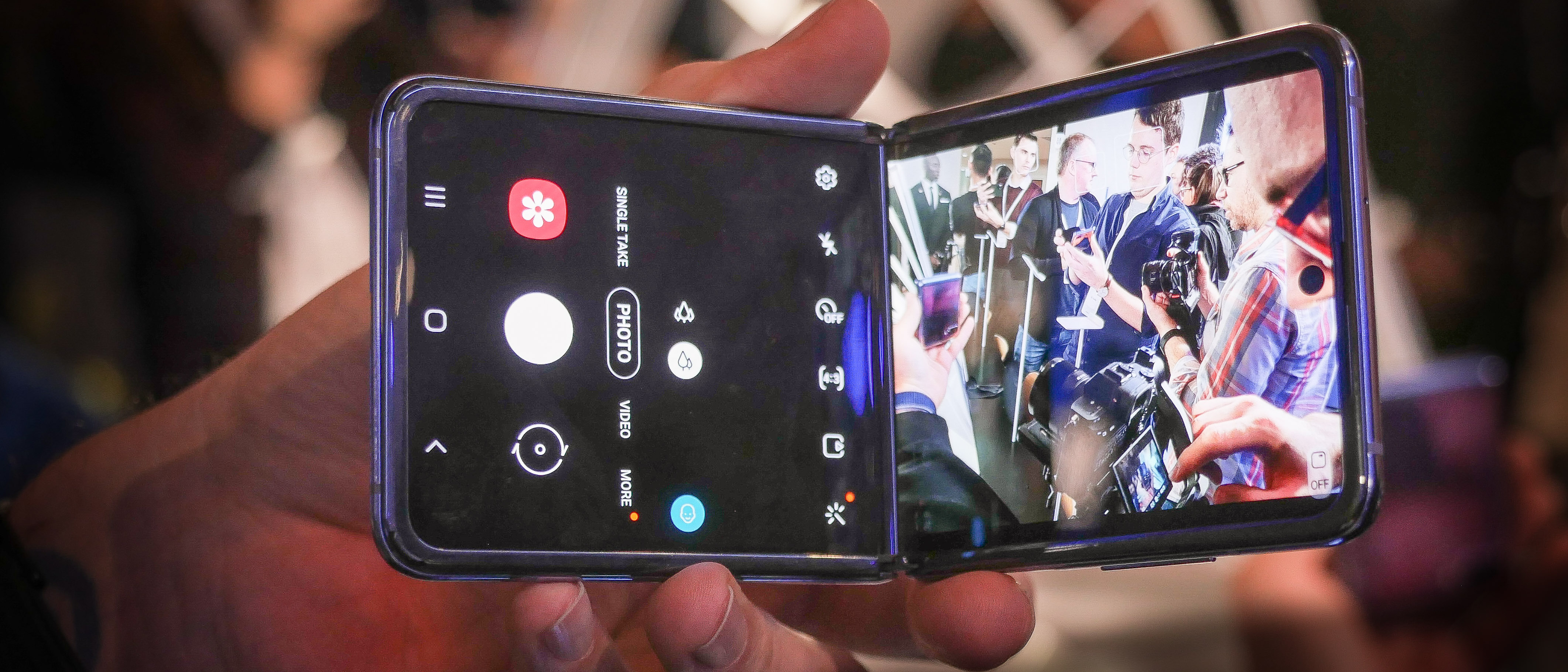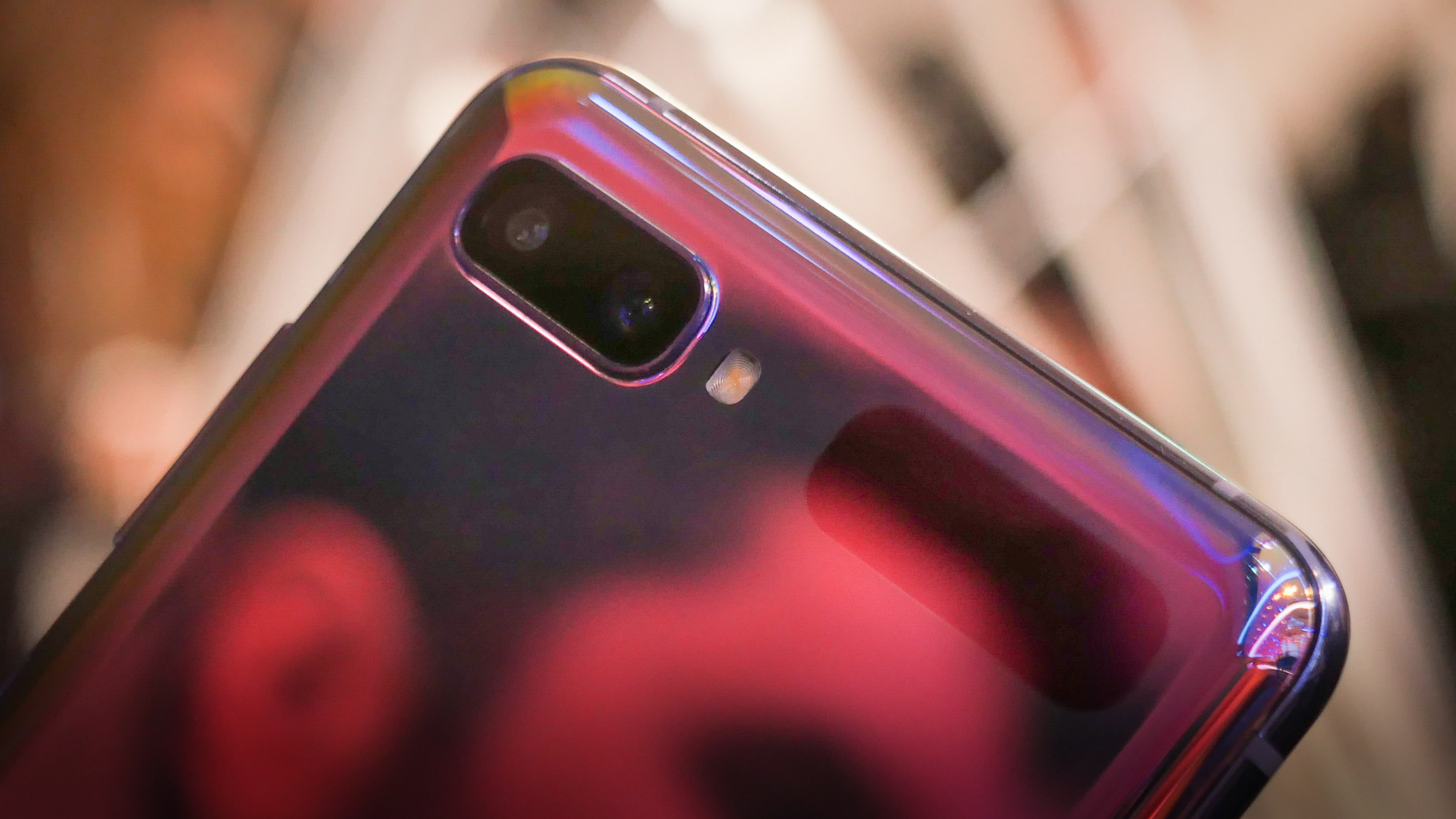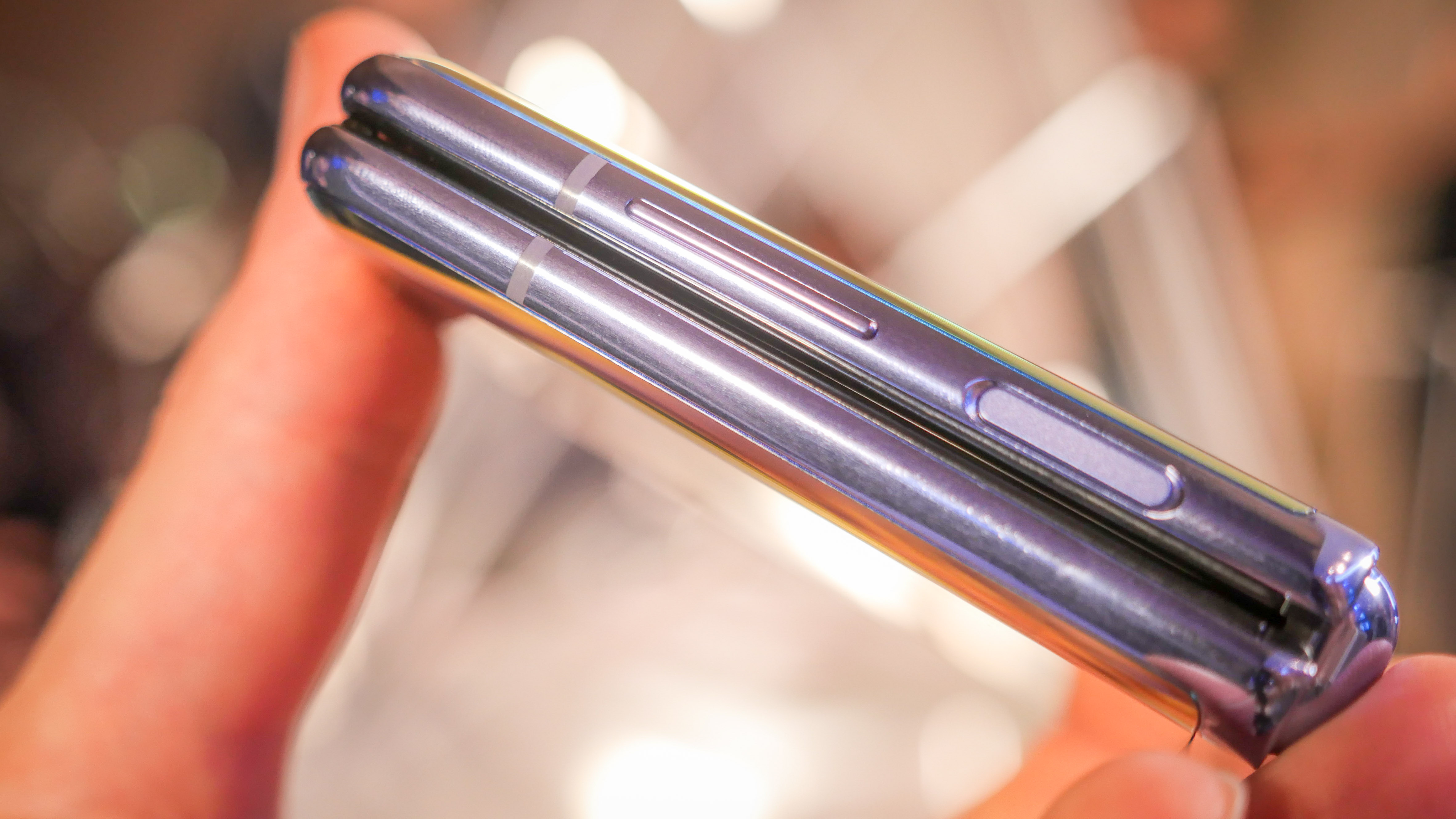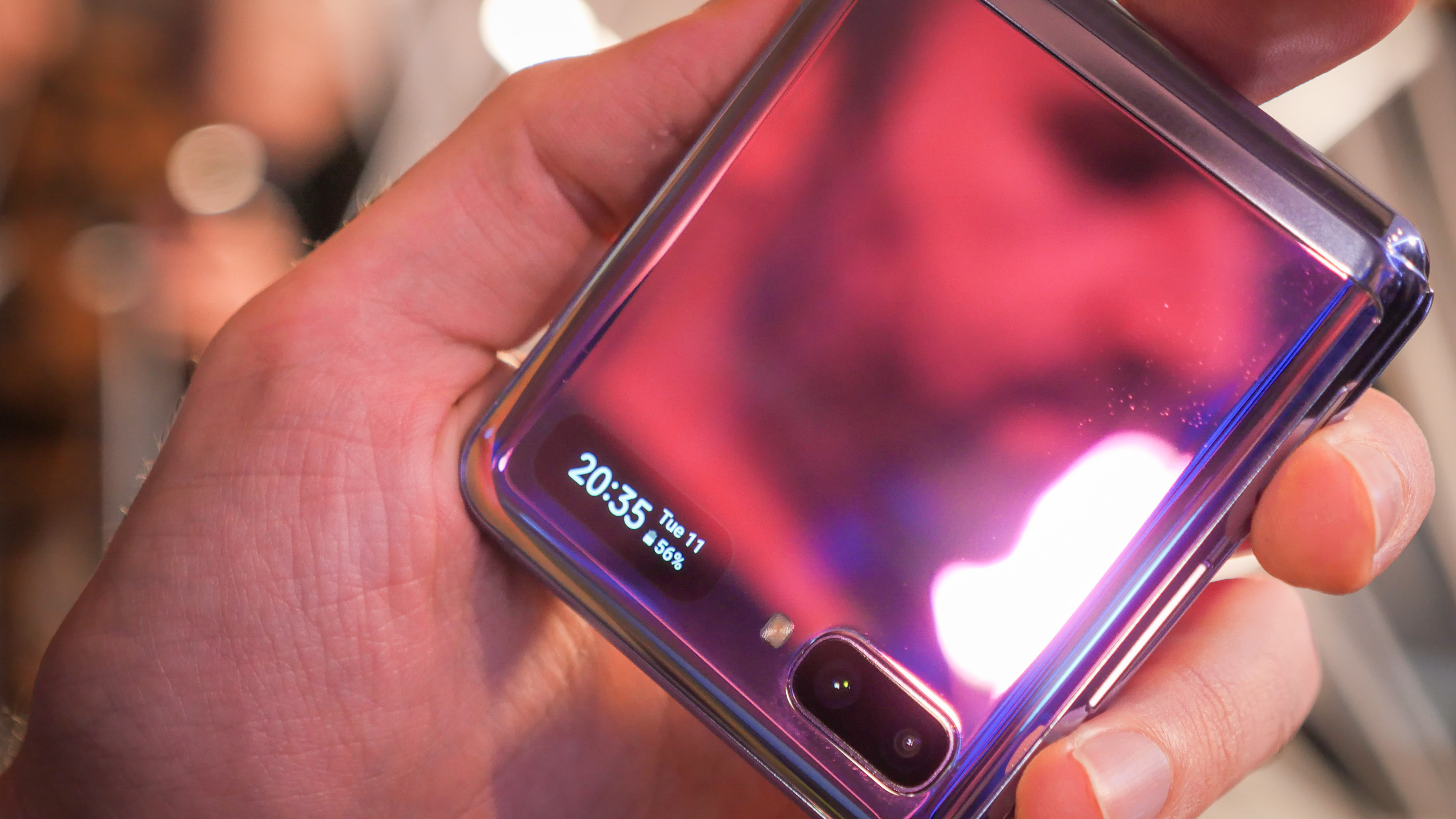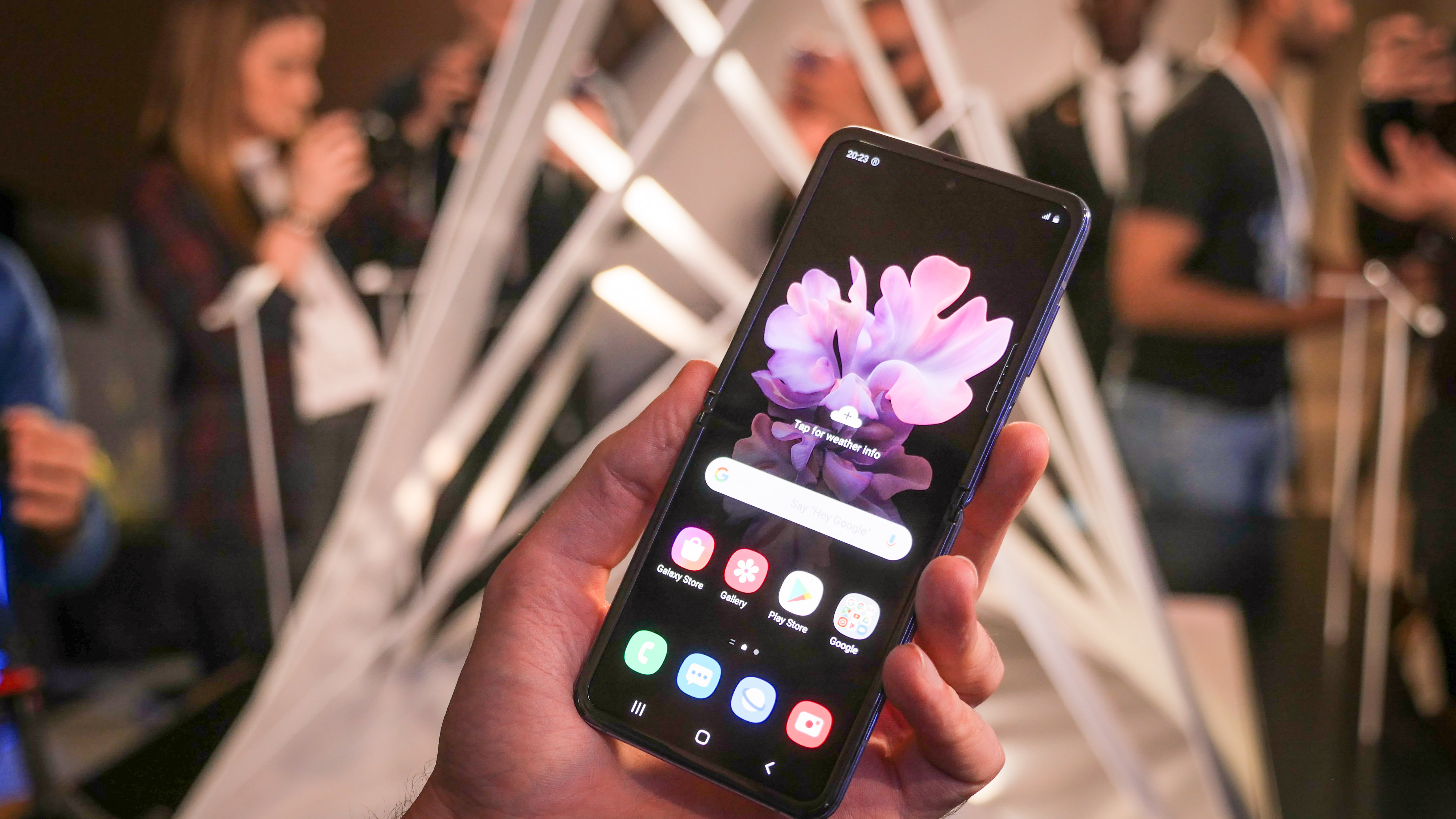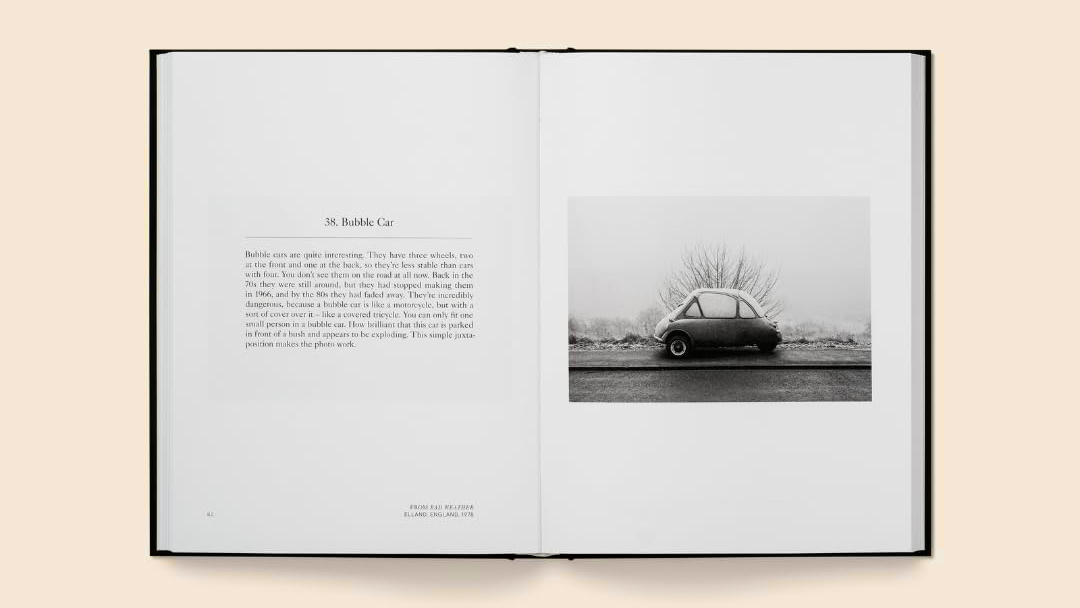Early Verdict
It’s finally here, a folding phone that’s convinced us foldables are past the proof of concept phase. The Samsung Galaxy Z Flip’s durability is still up for debate, but on first impression, it’s a cracking looking smartphone with a competent spec sheet. It’s cameras are a tad middle of the road on paper, but still better than that of the Motorola RAZR, the Flip’s main competition, making it the most attractive clamshell camera phone money can buy right now.
Pros
- +
Premium styling
- +
Solid flip mechanism
Cons
- -
Expensive
- -
Not class-leading camera spec
Why you can trust Digital Camera World
The Samsung Galaxy Z Flip, the second foldable from Samsung and the third mainstream flexible display phone to launch in the west is finally here. Leaked aplenty, specs and pictures are one thing, but there's nothing quite like getting anything with moving parts in your hands.
While we can't speak to the Z Flip's durability, and it's certainly not going to climb into our best camera phones of 2020 list with its dual-camera setup, we're still very impressed with what Samsung has achieved here.
Cameras
The Samsung Galaxy Z Flip features two 12MP cameras on the back and a punch hole 10MP selfie camera on its front side, or inside, depending on whether the phone is open or closed.
The main camera features a 1/2.55" sensor and 1.4µm pixels - smaller than the Galaxy S20’s 1.8µm pixels. It's combined with Dual Pixel auto focus, PDAF and an f/1.8, 27mm lens that's optically stabilised.
As for the secondary 12 MP camera, its f/2.2 lens sports a 12mm ultra-wide focal length, while its sensor is comprised of 1.12µm sized pixels.
The camera specs are nothing new, so the most novel thing about the Galaxy Flip's camera is the fact its UI works when the phone is mid-fold. This means it can be rested on a surface, perfect for long exposure shots. The hinge design is excellent for this tripod-type use case as throughout its range of motion.
As for the selfie camera, this is Samsung's tried and tested 10MP snapper, capable of shooting 2K video, and loaded up with auto focus.
The best camera deals, reviews, product advice, and unmissable photography news, direct to your inbox!
Design and screen
There's no doubt about it, the thing that will sell the Galaxy Z Flip is the phone's design. It's a clamshell in the style of the Motorola RAZR (2019), but it’s different enough to stand out.
Closed, the outer shell features a reflective glass exterior with availability in three mirror finish colours - black, purple and gold, as well as a Thom Browne edition which features good looking racing stripes down the center of the shell.
Unlike the RAZR (2019), there’s no big selfie-display on the front, but neither is there a need for one, given the fact this phone actually sports a selfie camera. Instead, the Z Flip features a 1.1-inch Super AMOLED ticker to showcase handy info like who’s calling and basic notification alerts.
Also read: Best Samsung phone
On the right is a fingerprint scanner and power button, while at the bottom of the phone is a USB-C port. Impressively, Samsung managed to kit the Z Flip out with stereo speakers, complete with AKG tuning.
Opened out, the Z Flip’s 6.7-inch Dynamic AMOLED screen is protected by what Samsung claims is foldable glass. Since the phone’s launch, this claim has been hotly contested, but tear downs and durability tests suggest that even if it is, the Z Flip suffers from the fragility other foldables with plastic displays do.
As for what it’s like to look at, the screen appears to be punchy and deep in the flesh. There was a slight visual crease on the device we tested, though this isn’t something Samsung shies away from talking about, with a disclaimer in its marketing materials mentioning that a crease may well appear.
Additional specs
The main thing that elevates the Z Flip above the pricier Moto RAZR (2019) on paper is the fact it features some relatively top-tier specs.
For starters, it’s powered by a Snapdragon 855+ chipset which is combined with 8GB RAM - plenty fast for gaming and more. Additionally, there’s a generous 256GB storage, though no microSD card support.
The Z Flip’s battery isn’t huge given how big the screen is, but it doesn’t worry us too much, given the fact it’ll be closed most of the day so should last a fair while. Also impressive: it sports wireless charging - something no other foldable does.
Early verdict
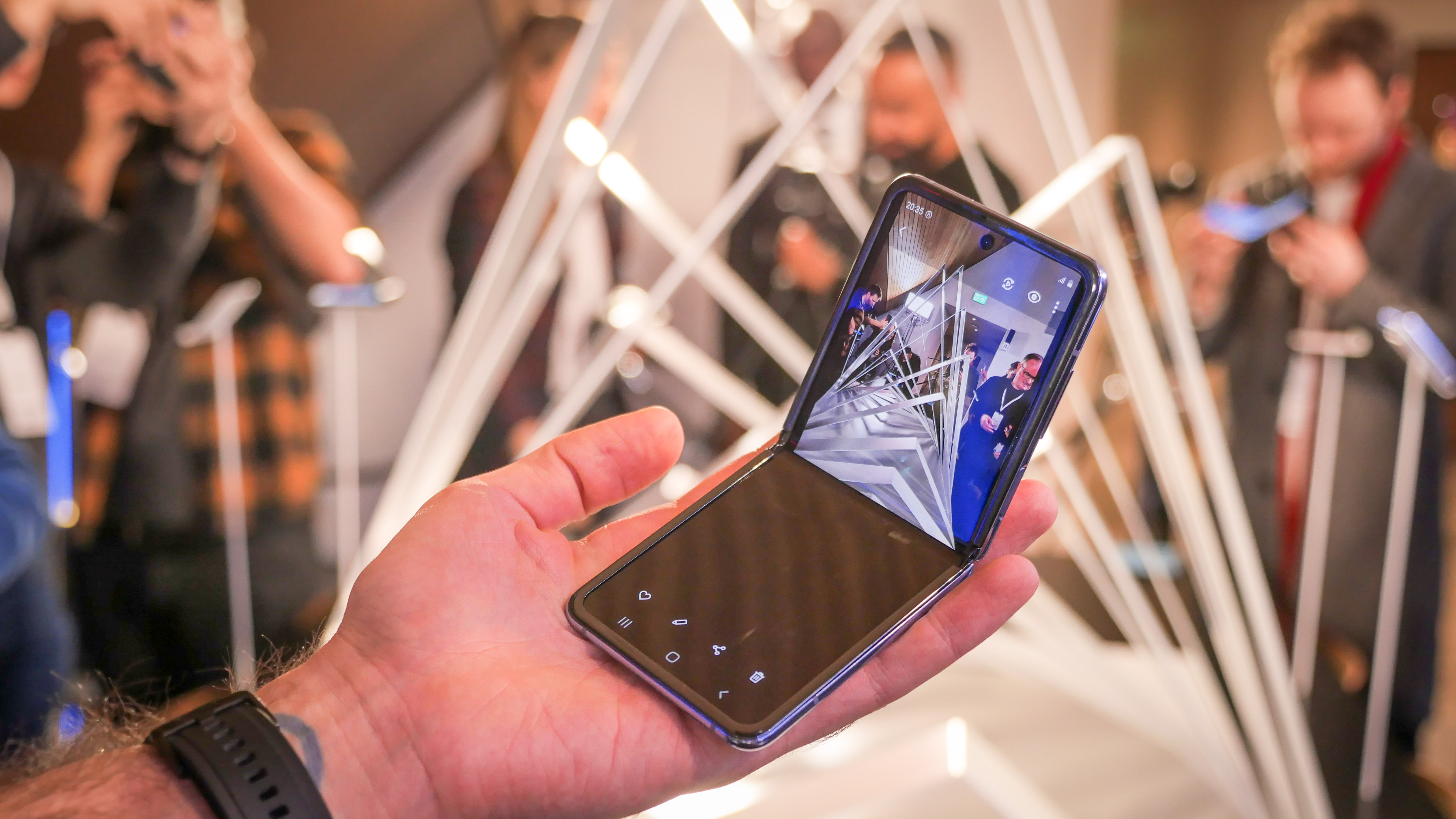
Motorola got there first with the RAZR refresh, but the Samsung Galaxy Z Flip definitely feels like a more refined take on the foldable clamshell formula. While the screen’s durability will be a major factor when it comes to how easy the phone is to recommend - something we won’t know until we’ve reviewed it; and the cameras look good, not great on paper, the phone’s specs, styling and in-hand feel all stack-up beautifully on first impression.
Will it be worth the $1,379.99/£1,300 asking price? Not unless you’re a fashionista or early adopter with stacks of cash, but with any luck, now Samsung’s nailed a folding formula, the Z Flip will herald a wave of more affordable flexible display phones in the future.
Read more
• Best flip phones
• Best fold phones
• Smartphone news, camera phone leaks and mobile rumors
• Best budget camera phone
• The best camera phone
• The best add-on lenses for iPhone and Android phones
• The best gimbals for your iPhone, GoPro and camera
• The best selfie sticks
Basil Kronfli is a freelance technology journalist, consultant, and content creator. He trained in graphic design and started his career at Canon Europe before moving into journalism. Basil is also experienced in video production, independently running the YouTube channel TechEdit, and during his time at Future, he worked alongside the Digital Camera World team as a senior video producer.
